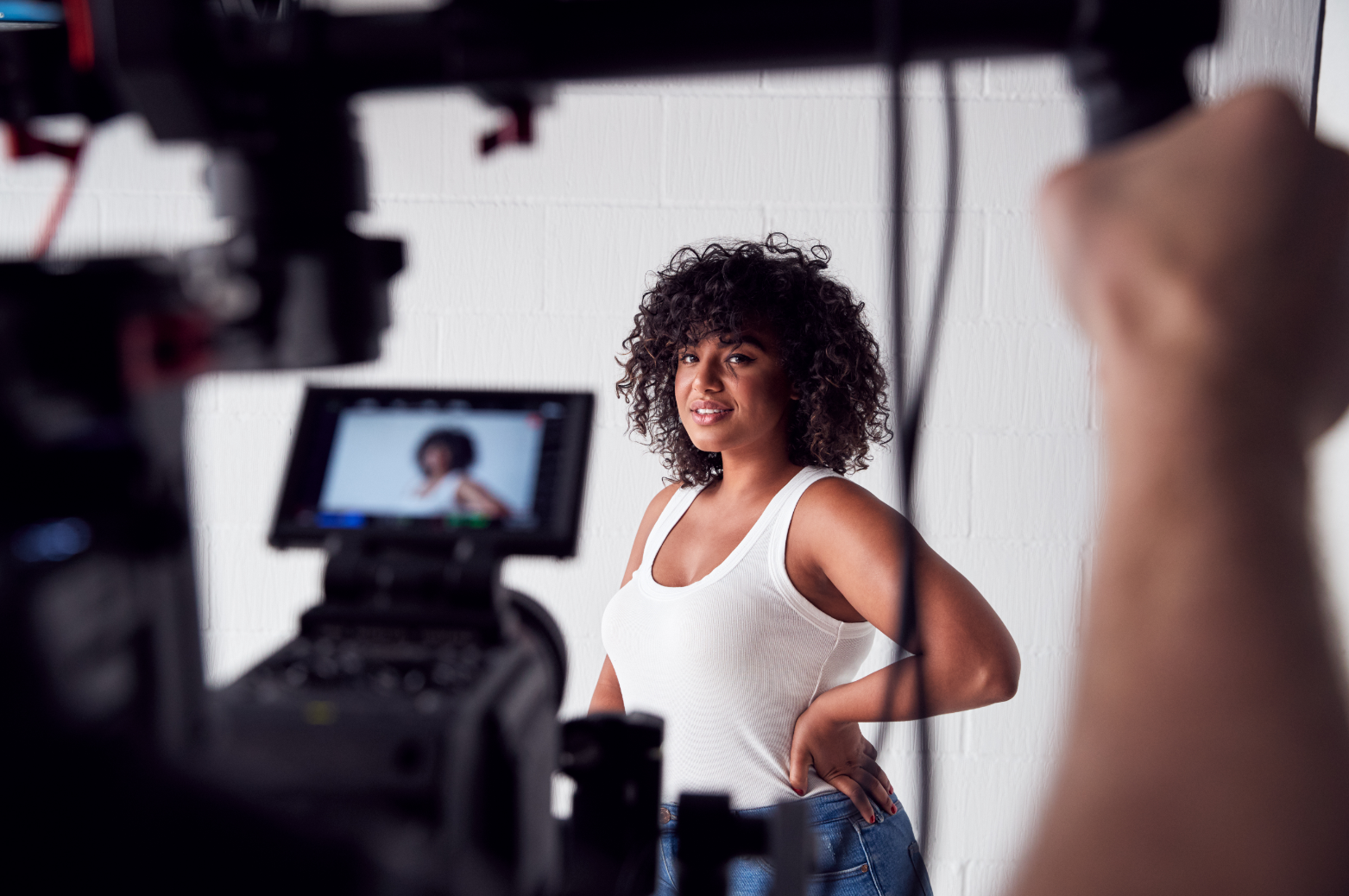The Power of Post-Production: Tips and Tools for Editing Your Video Content
.avif)
In the age of social media and online video platforms, creating engaging video content has become more important than ever. However, it's not just about filming great footage - the real magic happens in post-production. Post-production is where you can take your raw footage and turn it into a polished, professional-looking video that captures your audience's attention and delivers your message effectively.
But post-production can be overwhelming, especially for beginners. With so many tools and techniques available, where do you even begin?
In this blog post, we'll explore the power of post-production and share some tips and tools to help you edit and enhance your video content like a pro.
Steps involved in Post- Production
Before we jump on the tips let us understand in detail what goes on in the post-production stage.
Post-production is a critical process in corporate film making that involves several steps to enhance and refine the raw footage into a polished, final product. The following are the essential post-production steps:
- Ingesting and organizing footage:
The first step in post-production is to import the raw footage into the editing software and organize it into bins or folders. Editors in a video production house can help in streamlining the editing process and save time in searching for specific shots.
- Editing:
The next step is to assemble the footage into a rough cut, selecting the best shots and arranging them into a coherent sequence according to the script. This includes cutting, trimming, and rearranging shots to create a narrative structure that engages the viewer.

- Looking for audio:
Once the basic edit is ready and the lineup is ready, it's time to add the audio. The editors look for the perfect audio, as per the reference given to them. Once approved, they then move on and add the audio to the rough cut. In the case of a testimonial video, they sync the audio first and then add the background music.
- Audio editing:
Audio editing involves cleaning up and enhancing the sound quality of the footage. This includes removing background noise, adjusting levels, and adding sound effects and music to create a more immersive experience for the viewer.
- Visual effects and compositing:
Visual effects and compositing involve adding special effects, animation, or other elements to the footage. This can help in creating a more cinematic and immersive experience for the viewer.

- Color Correction and Grading:
Color correction involves adjusting the color of each shot to match a consistent look, while color grading involves enhancing the color to create a specific mood or tone. This process can help in creating a more visually appealing and cohesive final product.
- Finishing and Rendering:
The final step in post-production is to finish and master the video. This includes adding titles, captions, and credits, and exporting the final product in the desired format for distribution.
Tips for Effective Post-Production:
1. Planning and organizing your footage:
One of the most crucial steps in post-production is the organization and management of your footage. Before starting the editing process, it is essential to review all the footage and take note of the essential shots that you want to include in the final video.
Creating a storyboard or shot list can help in visualizing the final outcome and make the editing process more streamlined.
2. Pacing and rhythm in your video:
Pacing and rhythm are critical elements in video editing that can make or break the flow of your content. Maintaining an appropriate pace throughout the video can help in holding the viewers' attention and keep them engaged. The rhythm of your video should match the mood and tone you're trying to convey.
Using cuts, transitions, and other techniques can help you maintain the pace and rhythm of your video.
3. Color correction and color grading:
Color correction and color grading are essential steps in post-production that can help you create a more visually appealing video. Color correction involves adjusting the color of each shot to match the desired look and feel, while color grading involves enhancing the color to create a specific mood or tone.
Using software tools like Adobe Premiere Pro, Final Cut Pro X, or DaVinci Resolve can help you achieve professional-level color correction and grading.
4. Effective use of audio in post-production:
Audio plays a crucial role in video content, and proper audio editing can significantly enhance the quality of your video. Effective use of audio can help you create a more immersive experience for the viewers. Adding background music, sound effects, and voice-overs can help you convey emotions and emphasize important elements in your video.
Using audio editing software tools like Audacity, Adobe Audition, or Logic Pro X can help you achieve professional-level audio editing.
5. Importance of storytelling through editing:
Storytelling is the heart of any video content, and effective editing can help you convey your story in the most impactful way possible. The way you edit your video can significantly affect how the story is perceived by the viewers. The use of different editing techniques like jump cuts, match cuts, and crossfades can help in conveying a particular emotion or message.
Using a clear narrative structure and maintaining consistency throughout the video can help in creating a cohesive and engaging story.
6. Experiment with Different Editing Techniques:
Don't be afraid to experiment with different editing techniques and styles to create a unique and engaging final product. Try using jump cuts, crossfades, and other transitions to create a dynamic and engaging sequence.
7. Use B-Roll Footage:
B-roll footage can help in adding depth and visual interest to your video. B-roll footage refers to the supplementary footage that is used to visually support the primary footage. For example, if you're making a video about a food recipe, you can use B-roll footage of the ingredients or the cooking process to add visual interest.
8. Pay Attention to Sound Design:
Sound design plays a crucial role in creating an immersive and engaging final product. Pay attention to the sound effects, music, and dialogue to create a balanced and cohesive soundtrack.
9. Don't Overdo the Effects:
While special effects and visual enhancements can add value to your video, it's important not to overdo them. Overusing special effects can distract from the content and create a less engaging final product. Use effects sparingly and only when they add value to the content.
Tools for enhancing the video content
1. Video Stabilization Software:
Video stabilization software can help in smoothing out shaky footage and creating a more stable video. This software uses complex algorithms to analyze the movement of each frame and make adjustments to create a smoother and more stable video. Some popular video stabilization software tools include Adobe After Effects, Final Cut Pro X, and VirtualDub.
2. Audio Editing Software:
Audio editing software can help in cleaning up and enhancing the sound quality of the footage. This software allows you to adjust levels, remove background noise, and add sound effects and music to create a more immersive experience for the viewer. Some popular audio editing software tools include Adobe Audition, Avid Pro Tools, and Audacity.
3. Color Grading Tools:
Color grading tools can help in adjusting the color and tone of your footage to create a more visually appealing and cohesive final product. Some popular color grading tools include Color Finale, FilmConvert, and Magic Bullet Suite.
Recommendations
The editing team here at Filmbaker uses and recommends the following software for video editing.
- Composition: Compositing involves layering different elements on top of each other and adjusting their properties to create a seamless and integrated final result. The goal of compositing is to create a polished and professional-looking video that effectively conveys the desired message to the viewer.
We recommend using Adobe Premiere Pro for compositing your videos.
- Graphics/Motion Graphics:
In motion graphics, static graphics are brought to life through animation and visual effects, creating dynamic and engaging visuals. The animation can be as simple as a logo animation or as complex as a full-blown explainer video.
We use After Effects for Motion Graphics.
Looking for Explainer video production services? Contact us today.
- Color Grading: Color grading is an important part of post-production as it can significantly impact the final product's overall look and mood. It is often used in film and television to create a consistent and cohesive visual style throughout a project. For example, a film set in a post-apocalyptic world may use desaturated and muted tones.
We recommend using DaVinci Resolve for the desired results.
Conclusion
Post-production is an essential part of creating high-quality video content. The process of editing, enhancing, and refining video footage can significantly impact the final product's overall quality and effectiveness.
By following the tips and techniques discussed in this article, such as planning and organizing footage, using effective pacing and rhythm, applying color correction and grading, and using audio and storytelling techniques effectively, you can create a polished and professional-looking video that engages and informs your audience.
Excited to take your videos to the next level? Contact us!


